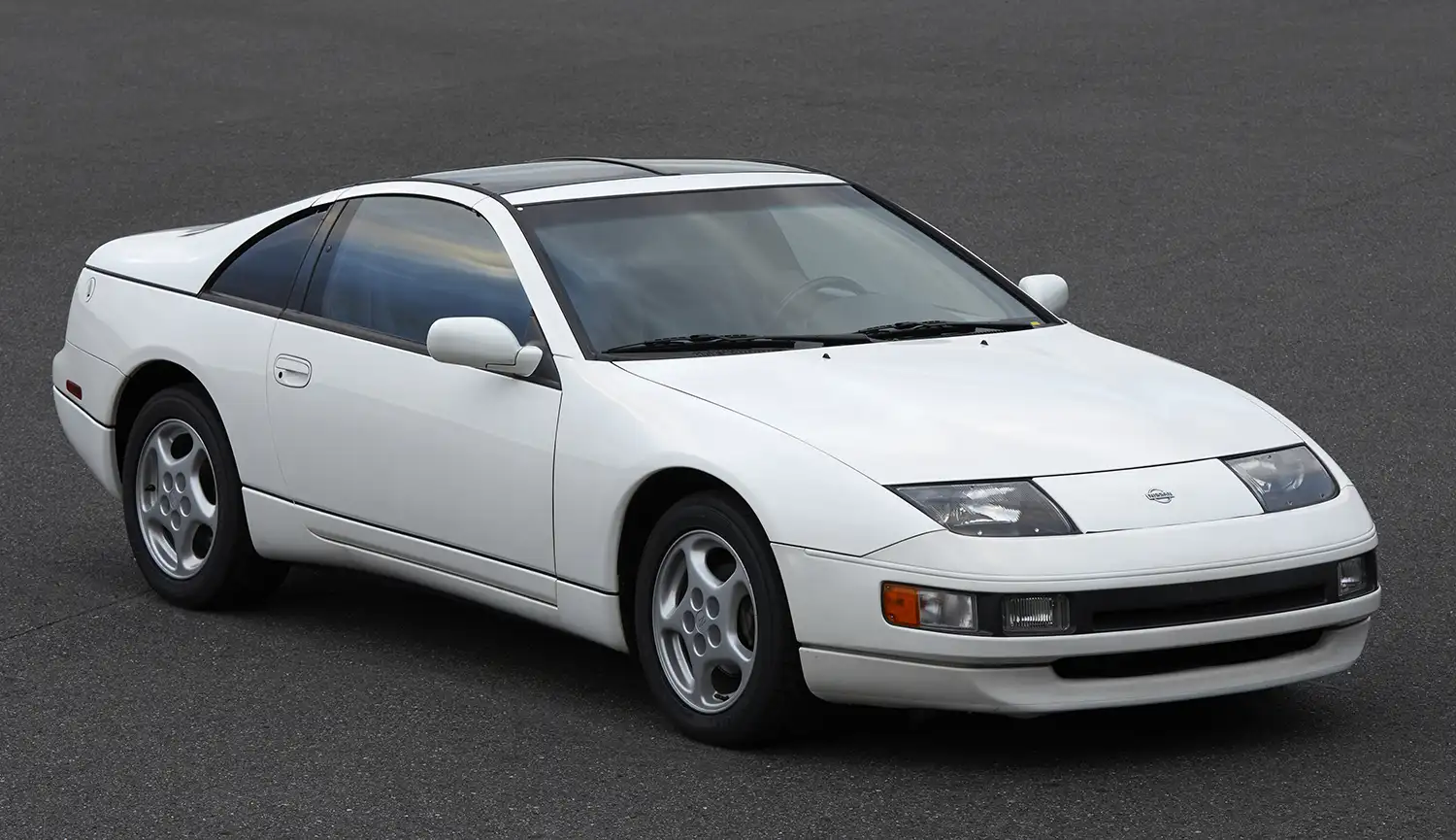
The Nissan 300ZX Twin Turbo, particularly in its Z32 generation, is widely regarded as one of the most iconic sports cars to emerge from Japan during the 1990s. Designed by Isao Sono and Toshio Yamashita, the Z32 introduced a fresh, aerodynamic profile that set it apart from its predecessor, the Z31. Officially approved in 1986, the design was bolder, wider, and featured fewer sharp edges, giving the car a rounder and more fluid silhouette.
Sleek Design with Aerodynamic Precision
The Z32’s body was engineered for both performance and style. While the drag coefficient slightly increased to 0.31 from the Z31’s 0.30, the new design offered better high-speed stability and a visually striking presence. Its flush-mounted headlights, lower stance, and wider track further contributed to its aggressive and performance-oriented aesthetic. The optional T-top added versatility, making the 300ZX equally suited for spirited drives and open-air cruising.

Twin-Turbocharged Performance
At the heart of the Nissan 300ZX Twin Turbo was the legendary 3.0-liter VG30DETT V6 engine. While it shared the displacement of the previous VG30 unit, the Twin Turbo version was upgraded with dual Garrett AiResearch turbochargers and dual intercoolers, propelling the car to 300 horsepower at 6,400 rpm and 283 lb-ft of torque at 3,600 rpm. This was a substantial leap from the naturally aspirated variant, which produced 222 bhp and 198 lb-ft of torque.
The 300ZX Twin Turbo could accelerate from 0 to 60 mph in around 5 seconds, with a top speed electronically limited to 155 mph. These figures put the 300ZX Twin Turbo in the company of some of the era’s fastest sports cars, cementing its reputation as a high-performance machine capable of going toe-to-toe with rivals from Europe and the U.S.
Advanced Technology: Super HICAS and More
Nissan equipped the 300ZX Twin Turbo with several advanced technologies that enhanced both performance and handling. One of the standout features was the “Super HICAS” (High Capacity Actively Controlled Steering), a four-wheel steering system that improved cornering stability at high speeds. The Z32 was also fitted with adjustable two-mode suspension, giving drivers the flexibility to switch between sport and touring modes depending on driving conditions.

The 300ZX’s sophisticated multi-link suspension and electronically adjustable dampers provided excellent ride quality and handling balance, making it equally at home on twisty backroads or cruising down highways.
A Driver-Centric Interior
Inside, the 300ZX Twin Turbo featured a driver-focused cockpit. Ergonomically designed, the interior included power-adjustable leather seats, a premium sound system, and an easy-to-read digital dashboard. The overall layout emphasized comfort and luxury without compromising on the car’s performance roots. Despite being a sports car, the 300ZX was also a practical choice, offering ample cargo space for weekend getaways.
Legacy and Collectibility
The Nissan 300ZX Twin Turbo left an indelible mark on automotive history. It became a poster car for a generation of enthusiasts and played a crucial role in popularizing Japanese performance vehicles globally. Today, the Z32 300ZX, especially the Twin Turbo models, are highly sought after by collectors and enthusiasts alike. Their rarity, combined with the era-defining design and performance, ensures that well-maintained examples continue to appreciate in value.
The Nissan 300ZX Twin Turbo, with its perfect balance of power, technology, and design, remains a timeless icon in the world of performance cars. Estimated current market value ranges from $25,000 to $50,000, depending on condition, mileage, and modifications.
Source: Nissan
This Article use tools from Chatgpt
